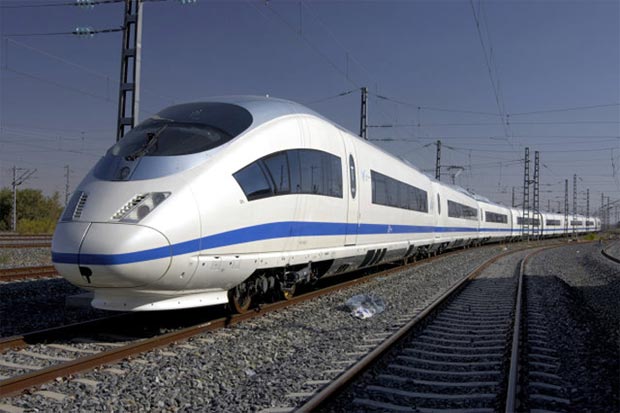

High-speed rail systems have found to be 29% more energy efficient than outdated railway systems like those offered by Amtrak. In contrast, high-speed rail is nine times more energy efficient than plane travel and four times more energy efficient than car travel, thereby reducing our dependence on fossil fuels. Our reliance on oil caused us to engage in deep-sea drilling, which results in oil spills that stretch for miles. When fossil fuels are burned, carbon dioxide is released, eroding our ozone layer which heats up our atmosphere. America is dependent on an energy source that requires us to destroy oceans and forests to reap the benefits. In 2020, the United States consumed a little over 18 million barrels of petroleum daily, 70% of which, or nearly 13 million barrels, is required for our existing transportation network. President Biden and his allies should make high-speed rail a central piece of this initiative. The Biden administration and congressional Democrats indicated that their next legislative priority is a large infrastructure package slated to cost $2 trillion over the next four years. High-speed rail will be monumental to New York and America’s environment and economy. In a country and a city that so claims to be the best in the world, under no circumstances should we stand idly by while our economic and geopolitical competitors overtake us. From the Czech Republic to China, governments across the world are innovating to create efficient and comfortable methods of transportation, while residents in the United States are consigned to airplanes and automobiles for long-distance travel. Chicago and St.The United States falls behind the rest of the developed world when it comes to high-speed rail.Dallas and Houston: In Fewer than 90 Minutes Top Speed 200mph.Southern California to Las Vegas: Virgin Trains USA subsidiary XpressWest Linking Metropolitan Los Angeles to Las Vegas (Top Speed 180 mph and only 90-minute ride, May be Operational By The End of 2023).Florida: Virgin Trains USA - Linking Miami to West Palm Beach (Will Operate Upto 125 mph).There are several high-speed rail systems in the US that are in various stages of development including: They were poised for a comeback, but then the pandemic set everything back once again and as people stayed at home, ridership plummeted. In short, there just isn't really any high-speed rail in America and its railways have experienced decades of neglect. It has a maximum speed of 240 km/h (150 mph) on one small section.Īs of November 2021, the United States only had one high-speed rail line under construction - the California High-Speed Rail in California. From Boston to Washington averages around 70.3 mph (113.1 km/h). The fastest scheduled time is 3 hours and 30 minutes with an average speed of 66 mph (106 km/h). But it fails to meet the 3-hour time objective between NYC and Boston taking 3 hours and 24 minutes.

The Acela Express links Boston, NYC, Philadelphia, Baltimore, and Washington DC. has to true high-speed rail (several lines in Europe and Asia top well over 200 mph" ".the Acela Express remains the closest thing the U.S. In much of the world, trains are considered the cutting edge of technology and the best modes of transport, but in the USA many think of trains as antiquated - possibly because most of the trains in the USA are antiquated. High-Speed Rail remains something of a foreign concept for many Americans (especially for those who live outside of the Northeast Corridor). Related: Views From The Most Scenic Train Rides In The World The Sorry State Of US High-Speed Rail Future Fastest: The Japanese Chuo Shinkansen From Tokyo To Osaka To Get To Speeds of 505 km/h (314 mph) - Opening in 2027.Fastest Train On Record: A Euroduplex TGV Train Once Reached 575 km/h or 357.Fastest Commerical Passenger Rail: The Shanghai Maglev Train (Reaches Speeds of Up to 451 km/h or 268 mph).China: Alone Has Over Two-Thirds of The World's High-Speed Rail.Not only that, but it also has the fastest high-speed rail in regular operation. Today China has by far the most high-speed rail in the world with over 37,900 kilometers or 23,500 miles of high-speed rail - that's over two-thirds of the world's total high-speed rail. First High-Speed Rail: The Japanese Tōkaidō Shinkansen Built In 1964 (Known As The Bullet Train).Generally, lines that are built to handle speeds of above 250 km/h (155 mph) and upgraded lines in excess of 200 km/h (124 mph) are considered to be high-speed. While there is no set definition of what high-speed rail is, it is a type of rail transport that runs significantly faster than traditional rail.


 0 kommentar(er)
0 kommentar(er)
